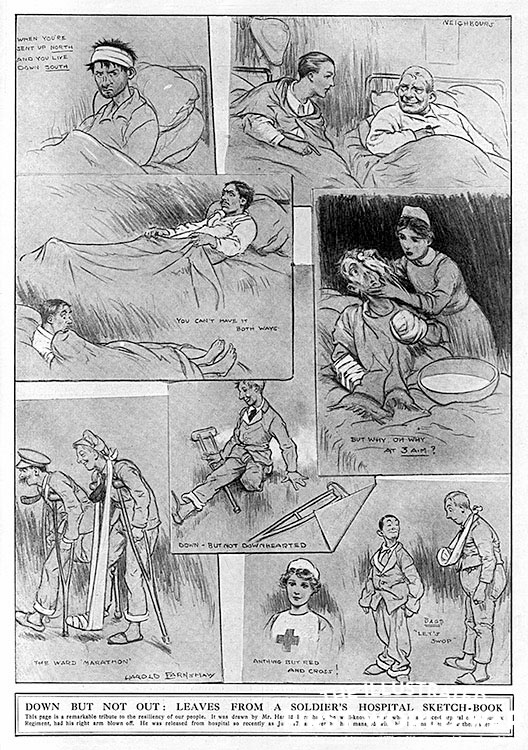'The Pater'. Dutch-language version. Translation: Man: "Piepa, what would you do if your wife ran off with your chauffeur?" - Piepa: "Take another chauffeur."
Harold C. Earnshaw was an early 20th-century British cartoonist and illustrator. He often assisted his wife Mabel Lucie Attwell on her work, but also made cartoons and funny strips for magazines like The Bystander and The Tatler. He had a comic strip called 'The Pater' (1928-1931) in The Daily Mirror.
Early life and career
Harold Cecil Earnshaw was born in 1866 in Woodford, Essex, as the son of a bank clerk in 1886. He was known as "Pat" to his friends. Earnshaw got his artistic education at St. Martin's School of Art in Long Acre, London, where he also met his future wife, illustrator Mabel Lucie Attwell. The couple married in 1908. They worked on several illustration assignments together, with Earnshaw mostly taking care of the animals and backgrounds. He would however never gain the same amount of fame as his wife, whose nostalgic drawings of cute children are still popular today.
A member of the London Sketch Club since 1908, Earnshaw was an illustrator in his own right. His earliest work include color illustrations for school stories like 'The Pretenders' by Meredith Fletcher (1907) and 'The Willoughby Captains' by Talbot Baines Reed (1907). He continued to work on a great many story and educational books for the publishers W. & R. Chambers, and Henry Frowde, Hodder & Stoughton. He also provided illustrations to Cassell's Magazine, Printers' Pie, The Pall Mall Magazine, The Boy's Own Paper, The Red Magazine, The Yellow Magazine, The Graphic and The Bystander.
Illustration from the 'Sherlock Holmes' novel 'The Sign of Four' (1912), and a cover for The Passing Show (9 October 1920).
World War I
Earnshaw served with the Artists' Rifles during World War I, enlisting with the Royal Sussex Regiment as a Lance Corporal in November 1915. He lost his right arm from an exploding shell during the Battle of the Somme in February 1917. Not willing to give up, the injured artist trained himself how to draw, paint and write with his left hand, and managed to continue his career as an illustrator. Only months after losing his arm, the magazine The Graphic published a series of drawings from his sketchbook, chronicling his experiences in a war hospital.
The Pater
Back in civilian life, Earnshaw continued to contribute cartoons, comic strips and illustrations to magazines such as The Illustrated Sporting and Dramatic News, The Sketch, The Sphere, Little Folks, The Tatler, The Illustrated London News, The Passing Show and The Sheffield Weekly Telegraph, but also to humorous postcards. Earnshaw had a comic strip in The Daily Mirror called 'The Pater', which ran from 10 December 1928 until 28 February 1931. He also resumed his career as a book illustrator for his former clients, but also for new publishers such as Blackie & Son and Thomas Nelson & Sons. He was furthermore active as a watercolor painter, and a member of the Chelsea Arts Club.
Final years and death
Harold Earnshaw spent his final years living in Kensington, Sussex, Eastbourne and London, while his production rapidly declined in the 1920s. Earnshaw never fully recovered from his war time injuries, and passed away in Kensington in 1937, at the age of 51. His daughter Peggy Wickham was also active as an illustrator.
World War I illustrations from The Graphic (1917).






